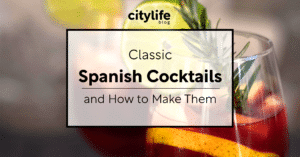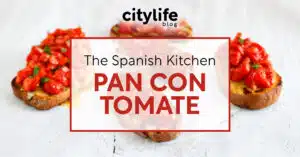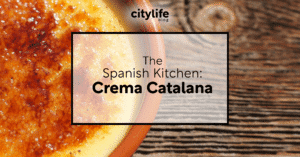
Integrating into a new culture is probably one of the most important and fun parts of living abroad, and part of that integration is familiarizing yourself with the cuisine. Whether you’re preparing for your stay abroad, savouring the memories of your time here, or are currently in Spain, we’ll help you master its most iconic dishes – like Paella!
Curious to explore more of the Spanish kitchen? Have a look at our other recipes, and if you need a hands-on experience, check out our activities calendar for upcoming Meet & Cook classes! And if cooking just isn’t for you, check out these top delivery apps instead!
A Brief History of Paella
Some think that the word ‘Pealla’ comes from the Arab word “Baqiyah”, which means ‘leftovers’, because this dish came from the creative minds of the lower class in Arab Spain. Servants of the Moorish Kings and higher-class families would collect the leftovers from the many banquets and simply mix them with rice! This method was improved in Valencia, giving birth to the famous Paella Valenciana. Since then, each region of Spain has customized the recipes by adding different ingredients like rabbit (conejo), chicken (pollo), shrimp (gambas), pork (cerdo), beef (carne), clams (almejas) and many more!
Ingredients to Make Paella
- 300g Bomba rice (or any short-grain rice)
- 1.5L water (or chicken broth)
- 300g chicken, cut into pieces (or substitute with seafood like shrimp and/or muscles and octopus)
- 200g rabbit, cut into pieces
- 150g green beans (ferraura)
- 100g lima beans (garrofó)
- 2 ripe tomatoes, grated
- 1 tsp sweet paprika
- 1 pinch saffron
- 2 sprigs of rosemary
- 4 tbsp olive oil
- Salt, to taste
- Optional: Lemon wedges for serving

How to Make Paella
- Heat olive oil in a wide paella pan over medium heat. Add chicken and rabbit (or seafood substitutes), searing until golden brown.
- Toss in green beans and lima beans, stir for a minute, then add grated tomato and paprika.
- Pour in water (or broth) and bring to a boil. Season with salt and add saffron.
- Let it cook for about 15 minutes, then add rice, spreading it evenly across the pan (don’t stir after this!).
- Reduce heat to medium-low and let it cook for about 20 minutes until the rice absorbs the liquid and starts forming a crispy bottom.
- Add rosemary sprigs for the last 5 minutes of cooking.
- Let the paella rest for 5 minutes, then serve with lemon wedges.
Tips and Tricks for Making Paella

- Don’t stir the rice after adding it
- Want extra socarrat (the crispy rice at the bottom)? Crank up the heat for the last 2 minutes.
- If you decide to add chorizo, be prepared for Valencians to take away your paella-privileges!
- While water is traditional, using chicken stock can enhance the richness of the dish and give it a more intense flavour
- If you can’t find rabbit, just use more chicken or duck. If none of those are to your taste, they can be substituted for shrimp, octopus, and other seafood!
Now that you’ve mastered the art of Paella, all that is left is to enjoy your creation. For more info on Spanish cuisine, check out our blog or even the the official Spanish tourism site, which also has a recipe for Paella! For now: ¡Buen provecho!













